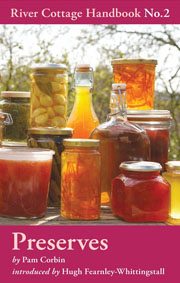Growing chillies is like any form of gardening, before too long your plants will pick up some sort of pests or disease. The causes can be wide ranging however once you know what to look out for the cures are often simple. In this article we’ll look at some of the more common problems your plants may face.
Slugs & Snails
These are often the worst enemies of chillie growers. There is nothing more that slugs and snails like more than to tuck into a young juicy chilli plant. Tell tale signs (apart from the obvious slime trails) are that young branches near the base of the plant have been stripped away overnight or parts of leaves (often the centre) have been munched away.
Both kinds of mollusks prefer dark damp places to live so some simple housekeeping around the garden can deter them living near your plants. Try to keep areas around the base of your plants free from fallen leaves that have a tendency to rot. Climbing ivy is another favoured hiding place so try to trim back at the bottom of walls where the ivy meets the ground.
Preventing Slugs & Snails
There are various methods to combat these pests including the traditional slug pellets. However these can be harmful to any birds that eat the poisoned pellets so a more organic approach may be better. That said there are quite a few organic slug pellets entering the market now which are much safer for pets and wildlife.
You can try beer traps – simply half fill a cup with beer (not lager) then bury the cup in the soil near your chilli plants so the rim is level with the ground. At least with this method they should die happy!!
Copper is known to repel slugs and snails because it produces a very slight electric charge that they hate. You can purchase copper rings to place around the base of plant pots or can place copper tubing or piping round you raised beds. The slugs and snails can’t stand it so much they avoid crawling over to get to your chilies and will head off elsewhere in search of food. The downside to this is that copper piping or rings can be expensive, however once purchased it should last you for years.I have had very good success using this method.
Another potential deterrent to use are egg shells sprinkled around the base of your plants. Slugs supposedly hate crawling over the shells. Another method that has had mixed results for me is to sprinkle used coffee grounds around the base of the plants. This is not only a snail deterrent but it helps add much needed nitrogen to the soil, aiding your pepper plants growth.
Another very effective method, if more time consuming is to go on regular snail hunts. If you can spare the time head out just after dark armed with a torch as this is the best time to catch the enemy on the move. If you have a root around in and around the chillie plants you’ll be amazed how many you find. Once you find them you have two options – relocate them somewhere else or end their chillie eating once and for all.
Slugs and Snails are both hermaphrodites (they can reproduce on their own without a mate) and also can lay huge numbers of eggs.This means a single mollusk amongst your chillie plants can soon lead to a whole army feasting on your chillie seedlings you’ve been carefully nurturing over the spring. As a result it is crucial that any treatment or action is not just a one off. If you continue you snail hunts every night for a week or two you should make a serious dent in the population and from then on less frequent hunts (once a week) should keep them at bay.
Related: We’ve put together a more detailed article on Slugs and Snails that may be on interest.
Aphids
These tiny creatures can infest your plants at any time during the growing season. They look like tiny white specks and tend to gather around the shoot tips, flower buds and all over younger leaves. At first glance they can look like some form of fungus however if you take a much closer look each speck will have legs! Aphids also leave a sticky white residue on leaves that they have been feeding on. Again this is easily mistaken for fungus. As mentioned the aphids tend to attack and feed on the new growth of the plants resulting in stunted or deformed growth.
image by dullhunk
How to Control Aphids on Chili Plants
- Sprays: After lots of experimentation we have found two types of spray that can work well against aphid infestations. Firsly we recommend trying a very weak soap solution sprayed onto you chillie plants twice a week for 2 weeks. Secondly Neem oil is a naturally occurring pesticide found in seeds from the neem tree. It has been proven to work very well against aphids and other pests and while more costly is ou preferred version.
- Natural predators. Lady birds and hover flies are natural predators of aphids. Trying to attract them into your garden is a great way to naturally control the pests. Planting bright flowers (french marigolds work particularly well) in and around your chillies is a great way to attract these bugs. This works well as a preventative measure. If you need an instant impact you can purchase ladybirds or larvae from Amazon and simply release them onto you plants or into your greenhouse for an immediate aphid feast! A more sustainable long term option is to install a ladybird nest box into your garden close to your plants.
Related: How I solved my aphid problem.
Thrips
Thrips are small, slender insects that can cause significant damage to chilli plants by feeding on their leaves, flowers, and fruits. Thrips are also known to transmit the tomato spotted wilt virus, which can transfer over to chilli plants.
Symptoms:
- Silvery or bronze streaks on leaves
- Deformed or scarred fruit
- Stunted plant growth
Control Methods:
- Manual removal: Simply spray your pepper plants with fresh water which can be moderately successful at rmoving the thrips and larvae from leaves. Be sure to spray the underside of the leaves.
- Blue Sticky Traps: Use blue sticky traps to attract and catch thrips.
- Reflective Mulch: Mulching with reflective materials can deter thrips by confusing them.
- Spinosad spray: An organic pesticide that effectively targets thrips while being safe for beneficial insects. It is wrth noting that spinsad can be harmful to bees so I only use it inside a greenhouse and as a last resort.
- Avoidance: Often thrips are brought into growing spaces when you buy new plants from a nursery or garden centre. When buying new plants always inspect them carefully before purchasing and consider islating them for a week or two before moving them near your other plants.
Mold & Rot
These kinds of problem can occur with any type of plants. Symptoms can be anything from mold on the leaves to brown, sot fruit, fungus around the stems. The usual causes are irregular or over watering, over crowding of plants or poor ventilation. As is the case when growing any plants, leave plenty of space between chillie plants, keep them well ventilated (especially if growing inside) and water regularly but not too often. If you get the balance right you should avoid these kind of problems quite easily.
Tips for Disease/Pest Free Chilli Plants
- Good Garden Hygeine. Keeping your growing area clean can prevent fungal infections and other diseases from thriving. Regularly remove dead or dying leaves and other plant debris. Perform an annual deep clean of your greenhouse and/or growing equipment including pots. Avoid overwatering or having a damp growing environment by increasing ventilation. Also ensure adequate spacing between plants to ensure good airflow.
- Choose disease resistant chilli varieties. Choosing commercially produced F1 chilli varieties can be a good way to ensure your plants are less suspeptable to disease.
- Use Organic Pest Control. I’ve head great success with encouraging and even buying ladybirds to control aphids. Also Neem oil has proven effective at getting any outbreaks under control.
- Inspect your pepper plants. It is much easier to control pests and diseases if you catch them early. Make a point of regularly inspecing your plants regularly (at least once a week).
- Inspect new plants. If you are buying new chilli plants from a nursery or garden centre always inspect them for pests and diseases thoroughly before buying them.






